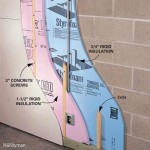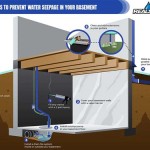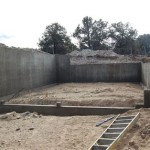The Best Way to Seal a Basement: Essential Aspects
Waterproofing a basement is crucial for maintaining a healthy and comfortable living space. A damp or wet basement can lead to mold growth, structural damage, and unpleasant odors. Fortunately, sealing a basement is a manageable task that can be done effectively with the right materials and techniques.
1. Inspect and Identify Entry Points
The first step in sealing a basement is to inspect it thoroughly for potential entry points for water. Look for cracks in the walls, floor, or foundation, as well as gaps around pipes, wires, and windows. These areas are vulnerable to water seepage and should be addressed promptly.
2. Seal Cracks and Gaps
Any cracks or gaps found during the inspection should be sealed immediately. Use a high-quality hydraulic cement or caulk specifically designed for waterproofing applications. Apply the sealant carefully, ensuring it fills the crack or gap completely and creates a watertight seal.
3. Install a Sump Pump
A sump pump is an essential component of basement waterproofing. It collects excess water from the basement floor and pumps it out through a discharge line. Install the sump pump in the lowest point of the basement and ensure it has adequate capacity to handle any potential water accumulation.
4. Improve Drainage
Proper drainage is crucial for preventing water from entering the basement. Grade the soil around the foundation so that it slopes away from the house, diverting water away from the walls. Install gutters and downspouts to collect rainwater and direct it away from the foundation.
5. Waterproof the Walls
Applying a waterproof coating to the basement walls can further prevent water penetration. Choose a coating that is resistant to moisture and specifically formulated for basement waterproofing. Follow the manufacturer's instructions carefully to ensure proper application and coverage.
6. Insulate the Walls and Floor
Insulating the basement walls and floor can help reduce moisture levels and improve energy efficiency. Install rigid foam insulation panels to the walls and add a layer of insulation to the floor. These measures will create a barrier against moisture and heat loss.
7. Ventilate the Basement
Maintaining adequate ventilation in the basement is essential to prevent moisture buildup. Install a dehumidifier to remove excess moisture from the air and circulate it throughout the space. Open windows or install a ventilation fan to promote airflow and reduce the risk of mold growth.
Additional Tips:
- Clean gutters and downspouts regularly to prevent clogging and ensure proper drainage.
- Check the sump pump regularly and test it to ensure it is functioning properly.
- Monitor for any signs of water leakage or mold growth and address them promptly.
- Consider hiring a professional waterproofing contractor for complex or extensive basement sealing projects.
By following these steps and incorporating the additional tips provided, you can effectively seal your basement against water intrusion, ensuring a dry and healthy living space for years to come.

The 3 Major Approaches To Basement Waterproofing News And Events For Systems Inc

How To Waterproof Your Basement True Value

How To Waterproof Basement Walls With Flex Seal Products Youtube

Diy Basement Waterproofing By Triad

Waterproofing Basement Walls Dos And Don Ts To Remember Bob Vila

Waterproofing A Basement From The Inside Can Be Challenge Fine Homebuilding

Diy Basement Waterproofing Sealonce System Easy Installation Waterproof Com

Interior Basement Waterproofing In Pa De Dry Tech Solutions

How To Waterproof Basement Walls From Inside Sani Tred

Waterproofing Basement Floor Slabs And Walls Waterproof Magazine








